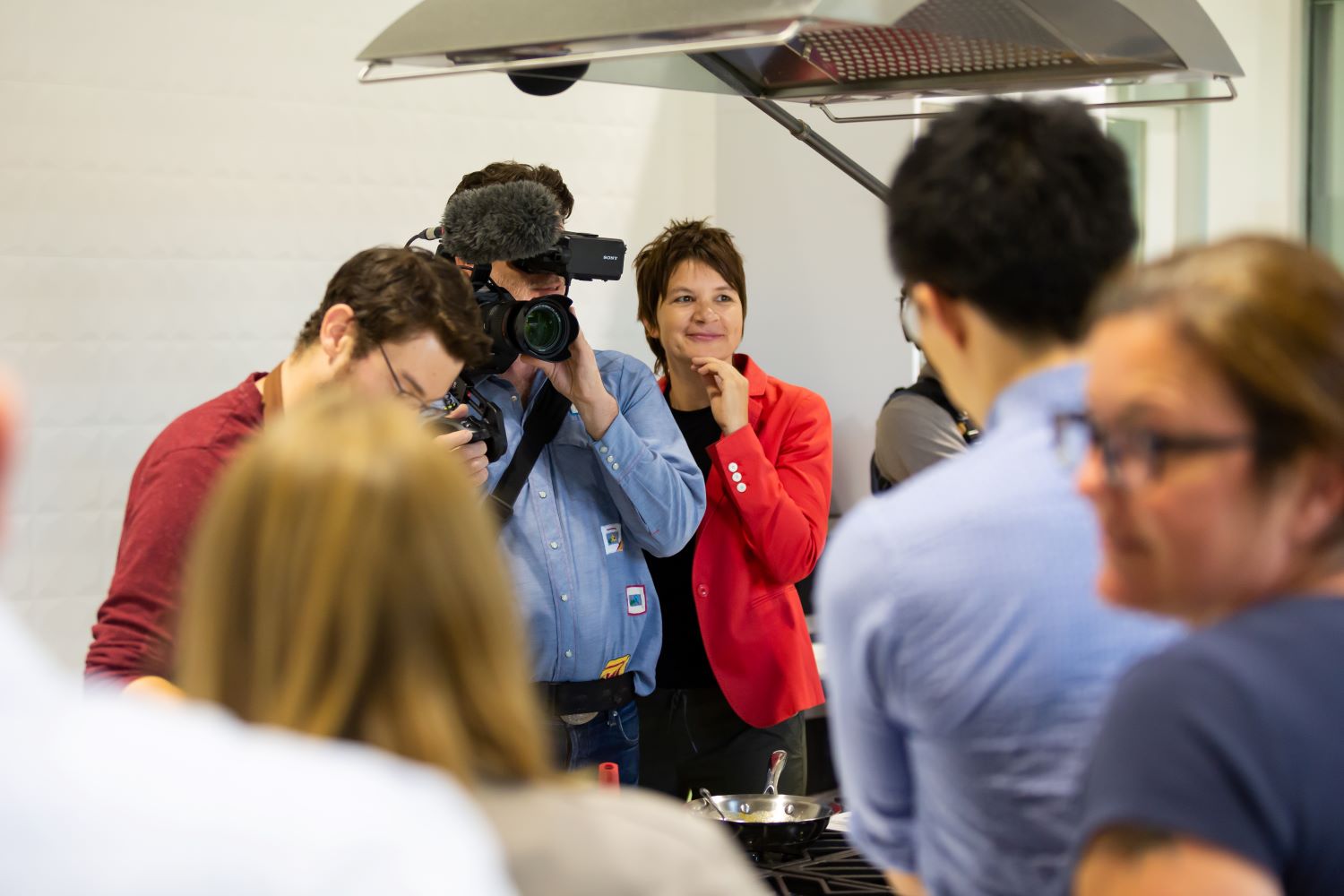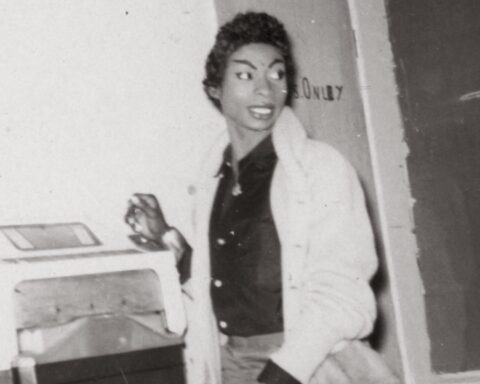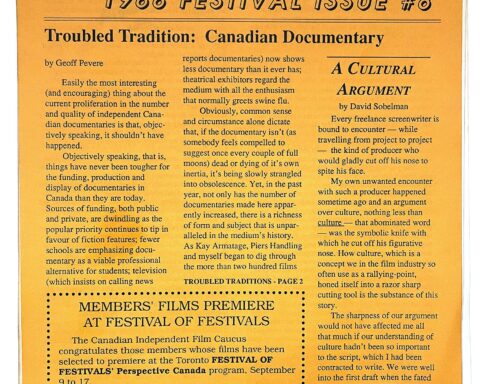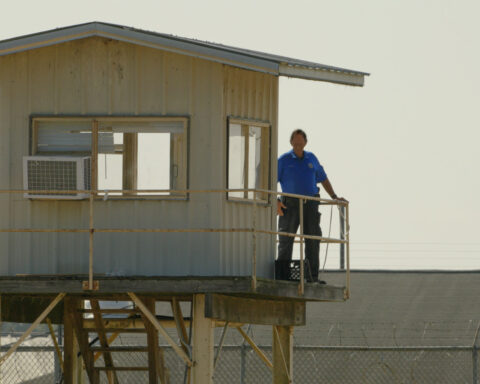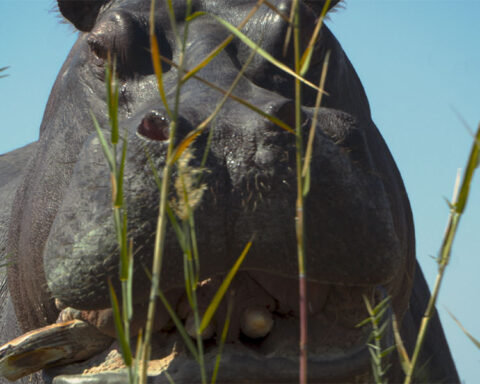It’s been sixteen years since the release of The Corporation introduced a wealth of exciting strategies for producing, promoting, and distributing Canadian documentaries that seek not just to enlighten viewers but give them a call to action. And it’s been five years since the Documentary Organization of Canada (DOC) published Charting a Course on Impact Producing, an in-depth study of the emerging ways that doc makers are financing work, forging alliances with activist and philanthropic partners, and reaching audiences, all with the goal of fostering change.
Yet one thing that becomes clear when impact production becomes the subject of conversation is how elastic and all-encompassing the term proves to be. It defies any efforts to treat it like a handy one-size-fits-all template. Instead, filmmakers face a wide array of challenges, and often very particular circumstances, when they seek to create and disseminate works they hope will make the world a little bit better.
“It’s definitely a multi-faceted term,” says Jackie Garrow, the former managing director for DOC in Toronto and an impact producer whose company Ring Five developed and led impact initiatives for such recent films as The Shadow of Gold, 14 & Muslim, and Prey. “There are many sub-roles within that term that I’m now starting to see quite clearly.”
“It’s funny how that phrase has given credibility to what a lot of us were doing all along!” jokes Kat Dodds, an impact producer for Vancouver’s Hello Cool World whose history in the field stretches back to her pioneering campaign for The Corporation and continued with work on projects like 65_RedRoses.
“As the founder and CEO of the social impact consultancy company Good Influence Films, JoAnne Fishburn has come to regard impact producing first and foremost as “an alternative distribution strategy,” one that may employ a variety of tools with the aim of “helping amplify issues and coalescing people around a call to action,” even if she laments it’s too often reduced to a digital media strategy. Yet impact production has also come to mean something grander, something more like an ethos shared by progressive-minded filmmakers worldwide. A Canadian documentary maker who also helped pioneer impact strategies with her films Water on the Table (2010) and The Ghosts in Our Machine (2013), the latter of which provided a handy case study for the DOC report, Liz Marshall says she sees it more as a genre that has developed along with a sense of common purpose. “It’s about an international community of filmmakers who are working on socially conscious themes,” she notes, “who care about bigger issues like the climate emergency and are storytellers within that space.”
Clearly, impact production has continued to morph and mature as a model both for making documentaries and for reaching the diverse group of viewers who may take their messages to heart. While the DOC study outlines trends and tactics that remain relevant—whether it’s seeking funding and collaborations in the non-profit and philanthropic sectors or marshalling the almighty power of social media—recent examples and experiences point toward new factors and considerations, too.
Moreover, films like Marshall’s Meat the Future, a fascinating look at the emerging industry for cell-based meat (see more below), and The New Corporation, a follow-up to the iconic doc by Mark Achbar, Joel Bakan, and Jennifer Abbott to be launched this fall, may inspire yet more modifications to whatever model may exist.
“There are some frameworks that we’re collectively establishing to make this work easier,” says Garrow of the fast-evolving approaches to making movies that matter. “But again,” she adds, “it’s still coming into vision for most of us.”
The search for allies
If the impact production model still feels fresh in Canada, that’s understandable given that it was relatively late to pick up momentum here. In her preface for the DOC study, Pepita Ferrari noted that “the relationship between philanthropy and documentary in Canada lags far behind that in other countries such as Australia, the United Kingdom, and the United States.” Five years later, that’s arguably still the case.
While working in the U.K. and Australia, Fishburn saw what groups like Doc Society and the Documentary Australia Foundation (DAF) did to educate filmmakers and change-makers about what they could do together. So she believes partners in those countries were “ripe and ready” when Good Pitch first began its mission over ten years ago to forge new coalitions between filmmakers, foundations, policymakers, broadcasters, and more. Launched by the Doc Society and now running as a non-profit based in London and New York, Good Pitch has since raised nearly $40 million (US) and brokered nearly 1,800 partnerships with the help of over fifteen international partners running Good Pitch editions in cities such as Vancouver. Citing the capacity-building done by Doc Society and DAF over the preceding years, Fishburn notes that “they had set really good conditions to have a successful Good Pitch. Here in Canada, we’ve been trying to do everything at once in order to catch up.”
As she also notes, partners across all the pertinent sectors are getting more familiar with the potential. “It’s about community building and crossing the many silos out there and that takes time,” says Fishburn. “And it takes really, really great content.” She sees the smart use of “real dollars” from the TELUS Fund and Inspirit Foundation as encouraging factors.
The huge variety of roles that an impact producer often assumes can pose other challenges. “I can wear many hats under the umbrella of one campaign,” explains Garrow. “I can be forging strategic partnerships, writing grant proposals, planning special theatrical events, organizing a community tour, doing web development, social media and direct marketing, and then distribution and discussion guides, too.”
Unsurprisingly, executing effective impact campaigns can be a matter of synthesizing resources and expertise from across that spectrum of support and activity. Garrow cites Ring Five and Kensington Communications’ campaign for the 2019 release of Sally Blake, Denis Delestrac and Robert Lang’s gold-extraction investigation The Shadow of Gold as one valuable learning opportunity.
“What I liked about that one was that we got started using marketing and distribution money from the OMDC (Ontario Media Development Corporation [now Ontario Creates]) to do a theatrical screening tour. But we then layered an impact strategy over top of that tour, which involved getting nonprofit partners on board to help with outreach, panel curation, and filling those theaters,” says Garrow. The success of the theatrical tour was proof of concept. And with the subsequent support of partners such as MiningWatch Canada, Ring Five was able to leverage funding outside of the film industry (from corporate and family foundation funds) to expand the release beyond the original five major cities with a plan to bring the film to remote mine-affected communities across Canada.
Garrow cites getting 14 & Muslim into public school boards in Toronto and Ottawa during Islamic Heritage Month as part of another multi-partner initiative as another recent achievement. She also notes that some impact campaigns succeed thanks to the support of stakeholders who may have been key to the very process of making the films. But she cautions against would-be impact filmmakers who may try to explicitly tailor their work for a possible constituency.
Kat Dodds agrees that a strong narrative continues to trump all other factors when it comes to a movie’s power. “Stories are far more effective at swaying people’s opinions and moving them towards something or other than a bunch of statistics and facts,” she says. “They reach people on that empathy level that creates more desire to do something.”
Whether they’re organizations, activists, or anyone else a filmmaker wants on side, those potential partners have to connect with the story. If they don’t, the docs will fade quickly despite the noblest of intentions. Says Garrow, “There are lots of times where a filmmaker will make an environmental film and think, ‘Oh, Greenpeace is going to love this and all the environmental groups are going to want to use this.’ And it’s not necessarily true. It really has to fit right within how they’re thinking, what they’re currently focused on, and what they want to do.”
New pieces in the impact puzzle
Documentary makers in the impact realm may also find themselves pursuing subjects and exploring issues for which there are preexisting interest groups or activists, whether pro or con. That was a challenge for Marshall when she began working on Meat the Future, a character-driven story of innovation that’s far more philosophical than polemical by nature.
“I know with The Ghosts in Our Machine, the core audience was very clear and extremely passionate from the get-go,” she says. “We had a built-in global core audience right away and that just expanded over time as the subject of the moral rights of non-human animals also became much more in the centre stage.
“But with Meat the Future,” she adds, “I didn’t even know who the core audience would be. I still don’t know because it’s still unfolding and emerging. But what excites me about it is that people from all tiers and all different groups are looking at this topic—people involved in technology, in innovation, in the economy, in climate, in animal issues, in health issues.”
Marshall praises her commissioners at the Documentary Channel for supporting her efforts to discover where her story could go. And in another indication of the increasingly global nature of the impact model, she also developed the project with the help of the Redford Center, the San Francisco-based non-profit formed by Robert Redford and his son James with a focus on environmental filmmaking. Marshall was also the lone Canadian invited to Doc Society and Exposure Labs’ inaugural Climate Story Lab in New York last summer, where her work was part of a cohort of international films that are environmental and solution-focused. Pitching her film there, she says, “was a huge relief and validation because I had felt like I was in the wilderness with this.”
The forthcoming release of The New Corporation could be another transformative event for the impact space. One reason it could replicate its predecessor’s raise-all-boats effect on other progressive-minded projects is Cool (Dot) World, an innovative new software platform now being readied for launch alongside the film by Dodds and Leena Minifie, her partner in the initiative and the CEO of her own impact production outfit, Stories First.
“The truth is what we’re trying to mitigate right now is this siloed attempt to build audiences, project by project, without carrying them over based on areas of interest,” Dodds explains. “The fundamental thing I’ve said since The Corporation days is that our secret weapon is co-promotion. That’s the only way that we can get critical mass for any of our projects. When we did all that with the first film, it was very grassroots.
“But the beautiful thing now is these online tools can do that. The problem is these online tools are designed and controlled by corporations who are trying to monetize it—they pretty much deliberately killed organic use so that people have to spend money on ads. What we’re going to be doing with the platform is consolidating the efforts for every project and bringing those targetable lists into the next project with the relevant content. So this will actually amp up what we’re able to do in a significant way.
“Frankly, we can’t compete with the corporations who are doing this with impunity now for nefarious reasons. We can only compete with it if we collaborate and build a big enough list of progressive audiences to take action around different issues and use it to spread content that is more enlightening, illuminating, and important to the kind of changes we want to see.”
Now in its beta stage, Cool (Dot) World wouldn’t be complete without its own snappy slogan: “Big Data for Big Good.” If it fulfils the hopes of Dodds and Minifie, it could build a larger, more consistent, and more committed audience, an age-old challenge for Canadian content creators of any kind.
In the meantime, the potential for impact filmmaking continues to be an inspiration to those creators, producers, and other team members willing to invest the ingenuity and legwork necessary to making it all make a difference.
“It’s really exciting work,” says Garrow. “Obviously, we need more money in the system for it, but it’s only growing in terms of people’s appetite for it and in terms of filmmakers’ desire to get into this space.”
Case Study: Meat the Future
Liz Marshall’s four-year journey to make her new documentary began with a meatball. Of course, it wasn’t just any ordinary meatball. Presented to the world in 2016 by Memphis Meats co-founder and CEO Uma Valeti, this authentically chewy and tasty morsel was grown from cells originally harvested from bona-fide animal flesh before being cultivated in a lab. The estimated cost of the meatball was $1,000, which the Memphis Meats team has continued to economize with an eye toward getting cell-based meat alongside the more traditionally cultivated (and very environmentally taxing) varieties in grocery stores by 2021.
Marshall was lucky enough to be there to document that quest in Meat the Future, a film that captures the potential birth of an industry even as it invites viewers to ponder the practical, philosophical, ecological, and economic ramifications contained within that humble meatball. “I was looking for a story that had a sense of awe and wonder to it, not doom and gloom,” she says. When Marshall reached out to a variety of Silicon Valley start-ups looking to develop “clean meat,” Valeti was the only one open to the idea of being the subject of a longform film. Says Marshall, “We didn’t know he would become a leader within the space, which is what he’s become.”
Harvested meat can prove controversial, as Marshall witnessed when she pitched the project at the Hot Docs Forum in 2018. “It seemed to me that about fifty per cent of the people recoiled or had an immediate critical view. And for the other fifty, it was more like a light bulb went off over their heads. Meat is a very visceral subject.”
It’s a complex one too, as Meat the Future demonstrates. Yet just as she didn’t want to make a commercial for Memphis Meats, she didn’t want to make a science or business film either. “I wanted this to be a human story,” she says. “The questions of what motivates these people were more interesting to me than the minutiae of science, business, and technology. The moral or social underpinnings are of more interest to me.”
MEAT THE FUTURE – OFFICIAL TRAILER from LizMars on Vimeo.




